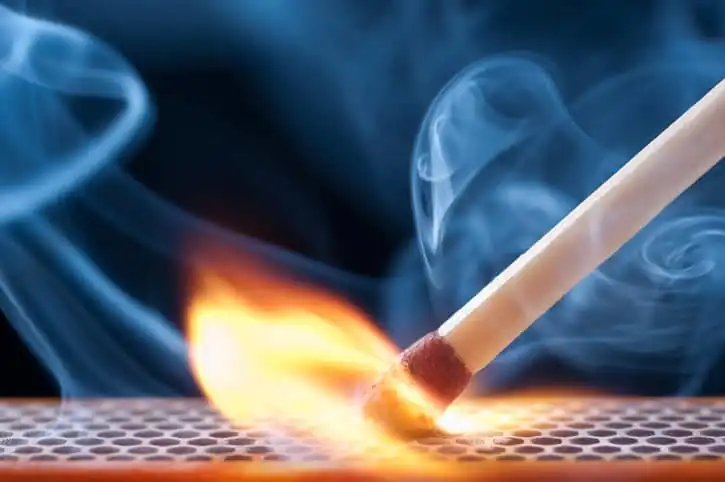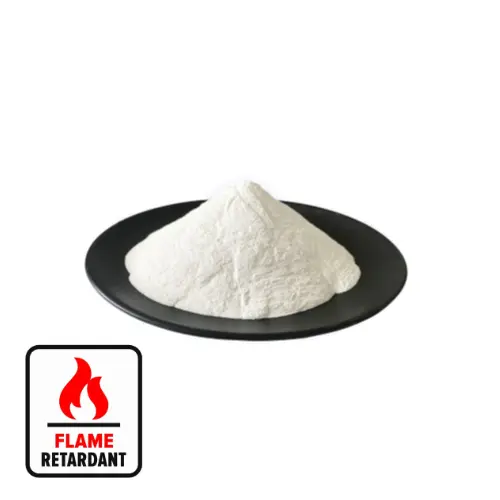Textiles are mostly flammable or combustible materials, how to reduce the risk of textile combustion and the release of toxic gases during combustion has attracted widespread concern and attention. With the establishment and improvement of fire safety and environmental protection regulations and textile flammability standards, there are more and more performance requirements for flame retardant textiles. Therefore, textile combustibility technical regulations gradually become an important part of the technical barriers to trade. Flame retardant products can reduce the occurrence of fire from the source, the study of textile flame retardant performance is extremely important, clean, efficient, and textile compatibility with environmentally friendly flame retardant has become the top priority in the development of flame retardant technology.

Recognized environmentally friendly flame retardants mainly refer to halogen-free, formaldehyde-free flame retardants. This type of flame retardant can minimize the harm to human health and the environment, and truly realize low toxicity, low smoke, no environmental pollution. According to the processing of materials, flame retardants can be divided into additive flame retardants and reactive flame retardants; according to the different chemical compositions, flame retardants mainly include organic flame retardants, inorganic flame retardants, organic and inorganic composite or compound flame retardants of three kinds.
Among them, inorganic hydrated metal flame retardants are mainly magnesium hydroxide, aluminum hydroxide, hydrotalcite, etc. These substances have the advantages of non-toxic, non-corrosive gases, good thermal stability, small amount of smoke, and cheap. Magnesium hydroxide and aluminum hydroxide are the most widely used hydrated metal flame retardants. Compared with aluminum hydroxide, magnesium hydroxide is more environmentally friendly. The thermal decomposition temperature of magnesium hydroxide is 100℃ higher than that of aluminum hydroxide, reaching 330℃, which is more conducive to improving the processing temperature; the neutralization ability of magnesium hydroxide and acid is very strong, and it can quickly neutralize the acidic gases produced by polymers in the process of combustion, such as CO2, SO2, NOX, etc.; magnesium hydroxide has a high decomposition ability, which helps to absorb the heat of combustion and improves the efficiency of fire-retardant; magnesium hydroxide is small in hardness and has a strong smoke-suppression ability. ability.
Magnesium hydroxide flame retardant for textiles has multiple properties and advantages:
Flame retardant mechanism:
Heat absorption and cooling: magnesium hydroxide will decompose when heated, this process requires the absorption of a large amount of heat, which can reduce the temperature of the textile surface, making it difficult for the temperature to reach the burning point of the textile, thus playing a flame retardant role. For example, in the early stage of a fire, magnesium hydroxide flame retardant can effectively slow down the spread of fire, for people to fight for more time to escape.
Dilution of oxygen: During decomposition, magnesium hydroxide will release moisture, which can further absorb heat and dilute the concentration of combustible gases and oxygen, so that the combustion of the lack of sufficient oxygen support, thereby reducing the rate of combustion. Water evaporation will also form a layer of water vapor film on the surface of the textile, playing the role of air insulation, further preventing the spread of combustion.
Formation of a protective layer: after decomposition of magnesium oxide has good fire resistance, will cover the textile surface, forming a layer of solid protection, preventing the further transfer of heat and oxygen, and enhance the flame retardant effect.
Advantages:
Environmental protection: compared with the traditional organic flame retardants, magnesium hydroxide is an inorganic flame retardant, does not contain harmful substances, the decomposition process will not produce toxic gases or corrosive gases, no pollution to the environment, harmless to human health, in line with the current trend of environmental protection.
Smoke suppression: magnesium hydroxide has strong smoke suppression ability, can reduce the smoke produced by textiles in the combustion process, reduce the concentration of smoke at the fire scene, improve visibility, and facilitate evacuation and fire rescue.
Improvement of durability: Adding magnesium hydroxide flame retardant can enhance the thermal stability of textiles, so that it can still maintain a better performance in high temperature environment, reduce the deformation and damage caused by high temperature, so as to extend the service life of textiles.
Ultraviolet protection: magnesium hydroxide can reflect and absorb ultraviolet rays, providing additional ultraviolet protection for textiles and protecting the skin from ultraviolet rays.
Anti-bacterial and anti-mold: it has certain anti-bacterial and anti-mold effect, which can reduce the growth of bacteria and mold on the textile and keep the textile clean and hygienic, which is of great significance for some textiles with high requirements for hygiene, such as underwear and towels.
Application way:
Direct addition: magnesium hydroxide is directly added to the fibers of textiles in the form of powder or granules, and the flame retardant is evenly mixed with the fibers through the textile process. This way of operation is relatively simple, but attention needs to be paid to the amount of flame retardant added and dispersion to ensure the uniformity of the flame retardant effect.
Coating treatment: Magnesium hydroxide is made into a flame retardant coating agent and coated on the surface of textiles to form a flame retardant coating. This approach allows the thickness and performance of the coating to be adjusted as needed, and is suitable for a variety of textiles, but may affect the feel and breathability of the textiles.
Application Challenges:
Compatibility issues: the poor compatibility of magnesium hydroxide with the polymer matrix of textiles may lead to a decrease in the mechanical properties of textiles, such as reduced strength and poor flexibility. Therefore, surface treatment of magnesium hydroxide or addition of compatibilizer is needed to improve its compatibility with polymer matrix.
Larger addition: In order to achieve good flame retardant effect, it is necessary to add more magnesium hydroxide flame retardant, which may increase the weight and cost of textiles, and may affect other properties of textiles, such as dyeing performance, hand feel, etc.

